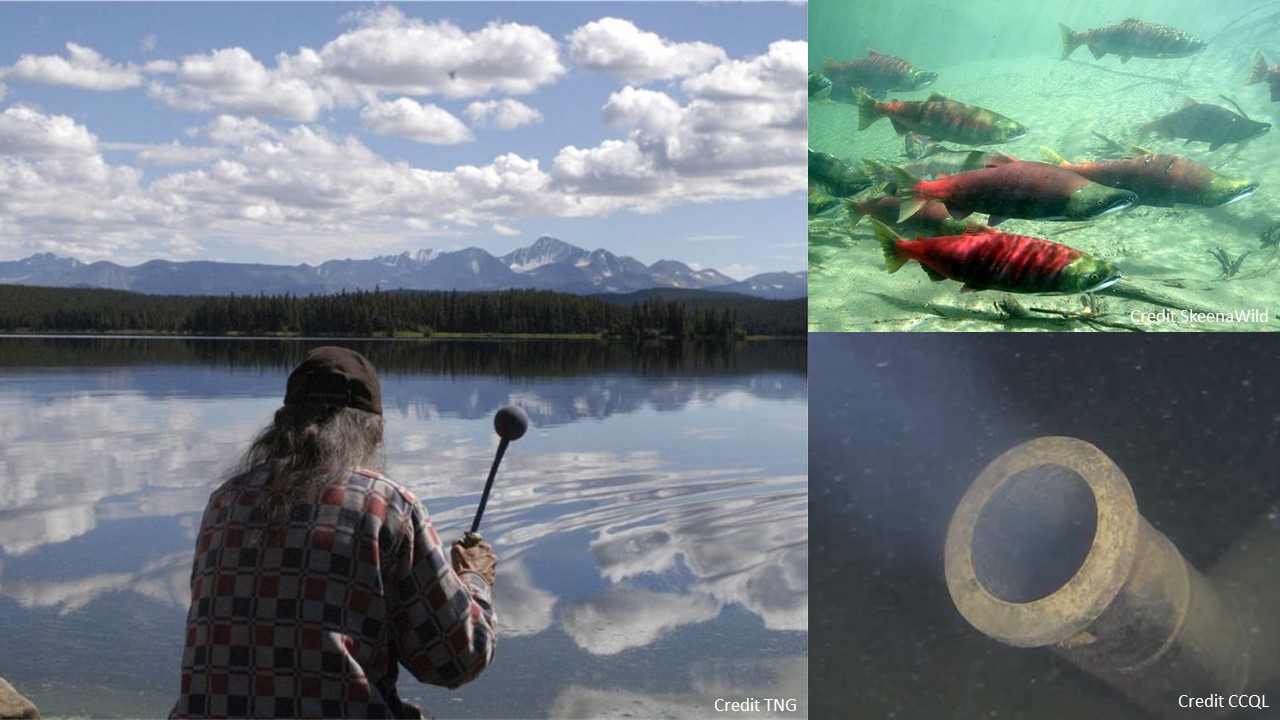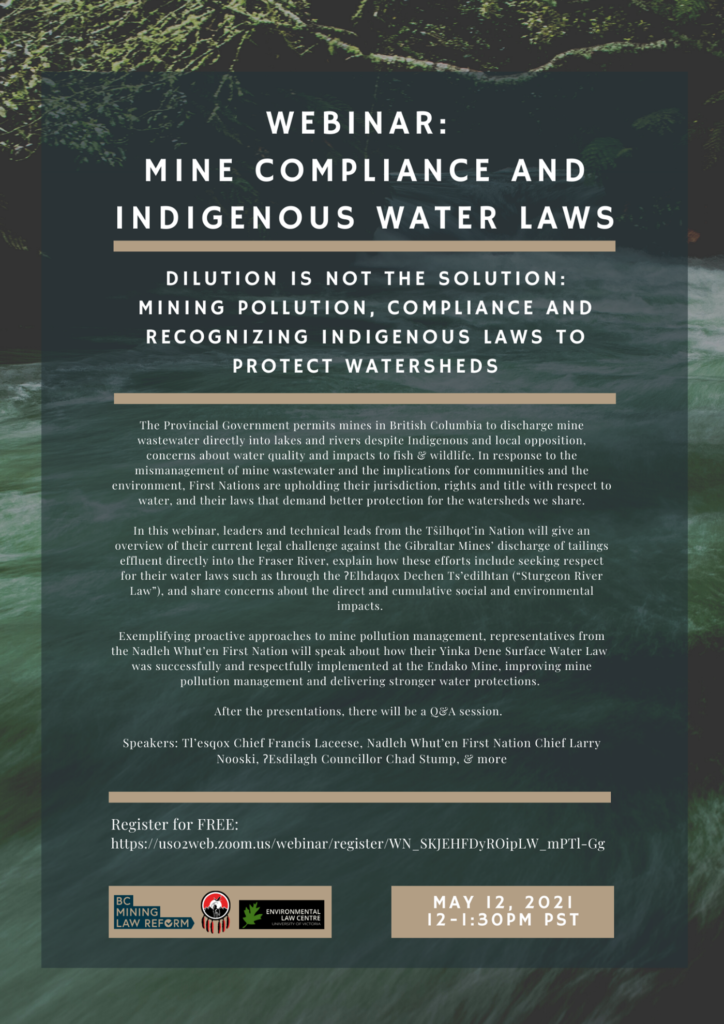
Featuring:
- Tŝilhqot’in Nation’s legal challenge against Gibraltar Mine (Taseko Mines)
- Nadleh Whut’en & Stellat’en First Nations’ successful efforts at Endako Mine (Centerra Gold / Thompson Creek Metals)
With:
- Chief Francis Laceese (Tl’esqox Nation)
- Chief Larry Nooski (Nadleh Whut’en Nation)
- Councillor Chad Stump (ʔEsdilagh Nation)
- J.P. Laplante (Sr. Advisor for Tŝilhqot’in Nen / Water, Lands and Resources)
- Rina Freed & Georgina Farah (Source Environmental Associates)
- Deborrah Curran (Executive Director of the Environmental Law Centre, University of Victoria)
Why Now?
The industry is working hard to paint B.C. mining as “green” and meeting global ESG standards because it can supply “low-carbon” materials needed to support the green energy transition. But unless the B.C. Government enforces laws and standards to protect water, ensures mine waste dumps do not put communities and watersheds at risk, respect community decisions and Indigenous consent, and make sure companies pay to clean up their mess, environmental destruction and social conflicts will continue to grow.
The B.C. Environmental Appeal Board hearing regarding the Tŝilhqot’in Nation’s legal challenge against Gibraltar Mine (Taseko Mines) mine wastewater discharge into the Fraser River is due to finish on May 21, 2021.
The Problem
The B.C. Government permits mines to discharge mine wastewater directly into lakes and rivers with little to no treatment, counting on a dilution factor to lower pollution levels, despite Indigenous and local opposition, concerns about water quality, as well as impacts to fish and wildlife.
The Role of Indigenous Laws
In response to the mismanagement of mine wastewater, a growing number of First Nations are upholding their jurisdiction, rights and title with respect to water, and their laws that demand better protection for the watersheds that people share (e.g. see the ʔElhdaqox Dechen Ts’edilhtan “Sturgeon River Law” and the Yinka Dene Surface Water Law )
On Mine Water Pollution Issues in British Columbia:
- Concerned Citizens of Quesnel Lake’s (CCQL)’s legal challenge to stop Mount Polley Mine’s (Imperial Metals) wastewater pipeline discharge into Quesnel Lake (brief)
- Ongoing efforts to stop massive selenium pollution in the Elk River Watershed (Teck)
- Growing concerns over arsenic, sulfate, nitrate, selenium and other mine water pollution into Similkameen and Skagit river watersheds (e.g. Copper Mountain, Imperial Metals)
- Copper and other water pollution from Bell and Granisle closed mines (Glencore) into Babine Lake, which produces 90% of the Skeena River watershed sockeye salmon
- As, Se, U, Mb, Cu, sulphates, nitrates pollution in Peterson Creek/Thompson River from the Ajax legacy mine in Kamloops (technical brief and legal letter)
- New maps showing hundreds of mine waste sites across B.C.

